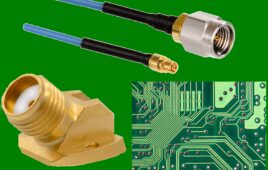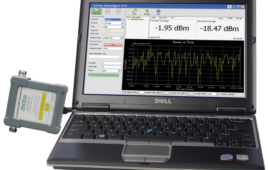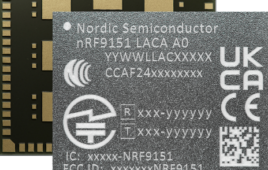It’s a demanding task to develop any wireless system, between the tight constraints that get convoluted by array of trade-offs. Marketplace success is largely determined by constant performance, cost, and time-to-market improvements, whether you’re working with components, subsystems, or complete radios. Nonetheless, RF testing challenges are inevitable, with some challenges being steeper than others. Having said that, these issues don’t come without solutions. Keysight Technologies has identified five particular RF testing hurdles commonly faced by research and development teams, whose solutions can be pivotal in a project’s overall success by…
- Ensuring compliance with complex standards.
- Making accurate RF power measurements.
- Solving interference problems.
- Finding and fixing EMI problems.
- Optimizing power consumption.
Ensuring compliance with complex standards and regulations
There’s a continual demand for increased channel capacity among mobile data, voice services, and (generally) wireless LAN. Transmitter testing becomes more challenging as developers try satisfying those needs using strategies like complex modulation types, frame structures, and multiplexing schemes.
According to Keysight, multicarrier and channel schemes or extensions like MIMO and carrier aggregation bolster these complications, and since these techniques equate or exceed the standards and regulations governing them (in regards to complexity), setting up an analyzer making compliant measurements contains a whole other set of challenges. In most cases, it’s impractical to manually set up certain signal analysis types, especially for making demodulation and standard-compliant measurements.
Making general and standards-specific measurements
While dedicated transmitter testers are available for several wireless standards, they typically focus on manufacturing or pilot production. On the contrary, Keysight points out how development and troubleshooting require broader measurement ranges that go beyond simply verifying performance and compliance of complete products. General spectrum analysis of modulated signals and subsystem signal measurements are additionally included at multiple points in the radio block diagram.
However, some of these signals will be continuous wave (CW) or modulated (although not necessarily at the eventual RF channel’s frequency). The natural platform for these measurements is the signal analyzer with a digital intermediate frequency (IF) section and vector signal processing. Signal analyzers that perform necessary spectrum measurements can be augmented at the time of purchase or later using software upgrades. Individual measurement applications are designed for specific wireless standards, and can be updated as they change, enabling a single signal analyzer to implement standards requirements alongside the general signal analysis tasks essential for wireless design.
Solving interference problems
Understanding a wireless transmitter’s spectral output (including their dynamics) is important, as many transient signals are present (sometimes with low duty cycles due to the pulsed nature of any signals occupying the spectrum). One particularly troublesome issue noted in Keysight’s publication is the duty cycle of interfering signals, and potentially high variability due to the nature of communications and multiplexing schemes, making some transient difficult to measure and pinpoint.
While some interference combinations, collisions, or instances are relatively uncommon, offending signal sources will more likely be noticed. Spectrum and signal analyzers have always been the first general tool choice for sensing and measuring false signals and interference. Architectures of many spectrum analyzers have recently evolved from analog to digital sections, along with scalar to vector signal processing. Implying more general and powerful analysis capabilities, these devices are now normally referred to as signal analyzers.
Finding and fixing EMI problems
EMI is a persisting concern for wireless engineers trying to comply with regulations, while ensuring their designs will coexist in dense spectral environments. Although formal certification testing is important, this occurs late in the development process, potentially putting a new product at risk for constraints like schedule delays, costly design revisions, and re-testing. Identifying and fixing these kinds of issues earlier during design and verification earlier is usually easier and not as expensive.
Measurements and setups are specialized for EMI testing, and different from conventional spectrum analysis. Specific measurement bandwidths for example, are required, while detectors like “quasi-peak” are used. These detectors (along with some measurement bandwidths) are normally not part of the spectrum or signal analyzers, which is why EMI testing is typically nor performed by designers. Instead, this stage of tests normally occur at a different location, which is often a dedicated laboratory operated by an external contractor. When performed as early as possible in the development process, the final EMI certification testing should almost be a formality.
Optimizing Power Consumption
Customer satisfaction and competitive success involve power management optimization, just like traditional mobile devices demanding frequent charging. Consequently, Keysight acknowledges how the physical size and weight of power sources must comply with design goals and since most portable devices use rechargeable batteries with limited capacity, they are expected to operate with low power consumption.
Batteries and power converters, in particular, often have high output resistance and limited dynamic power capability in the form of voltage or current slew rates. With their extra capacity, using standard lab power supplies may actually obscure underlying issues. Limited batteries, power supplies, and/or converters create trade-offs in the form of instantaneous and total power compared to RF performance. Such trade-offs are important for both functional capability and competitive viability.




